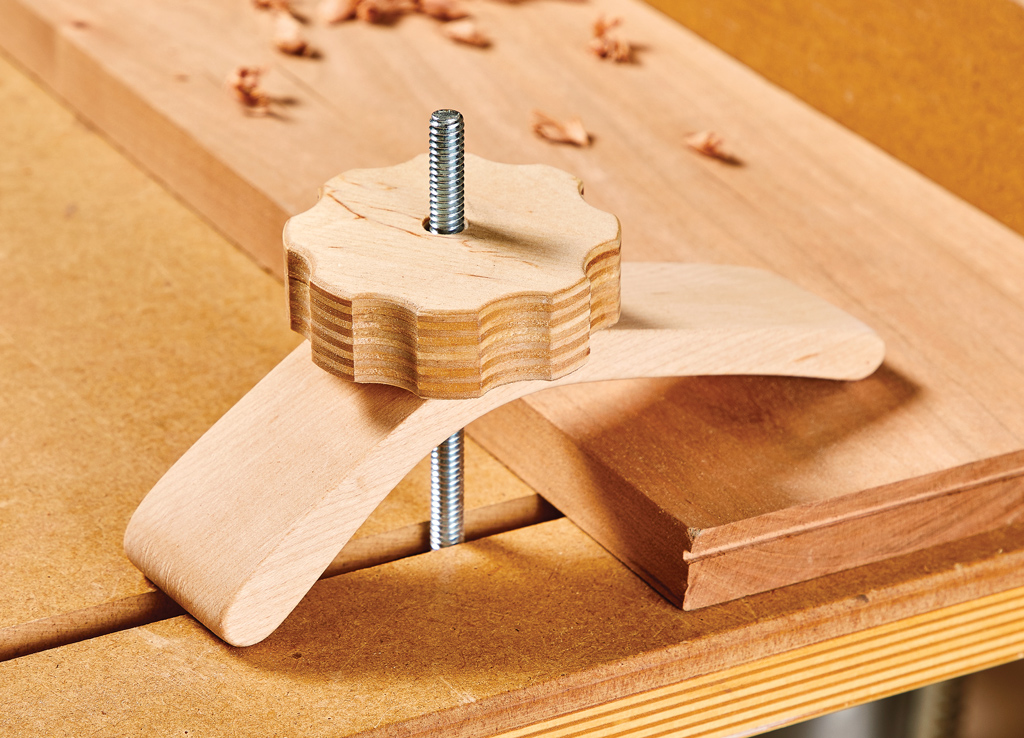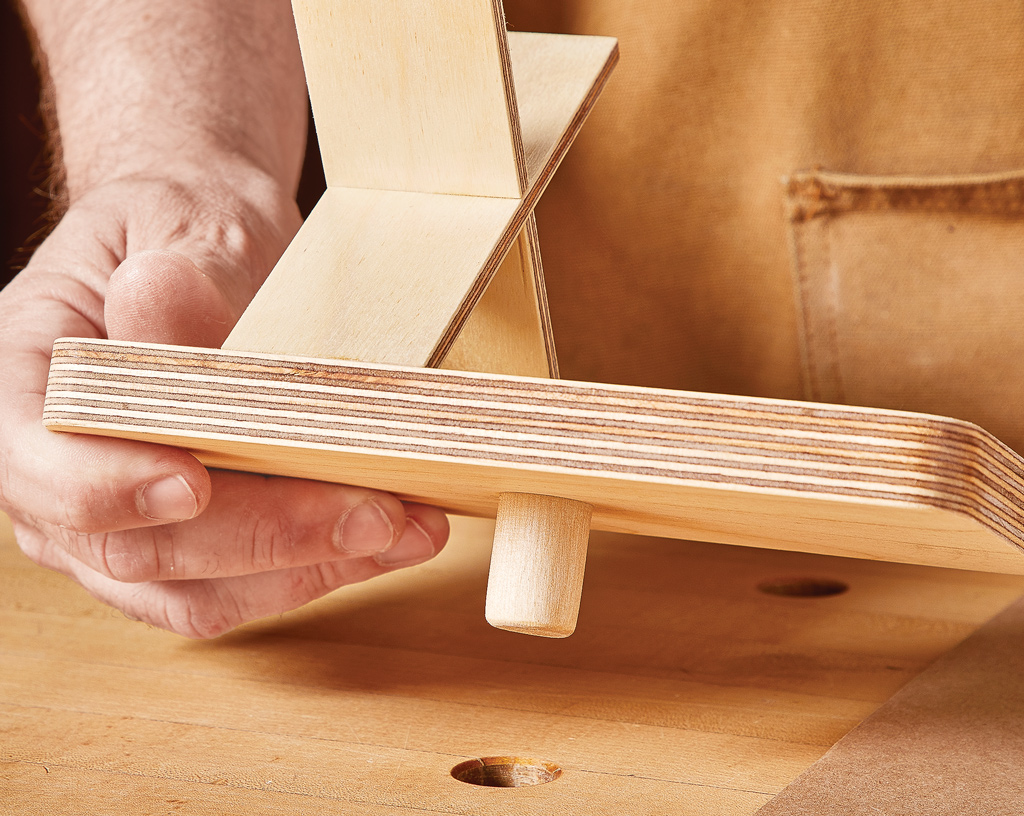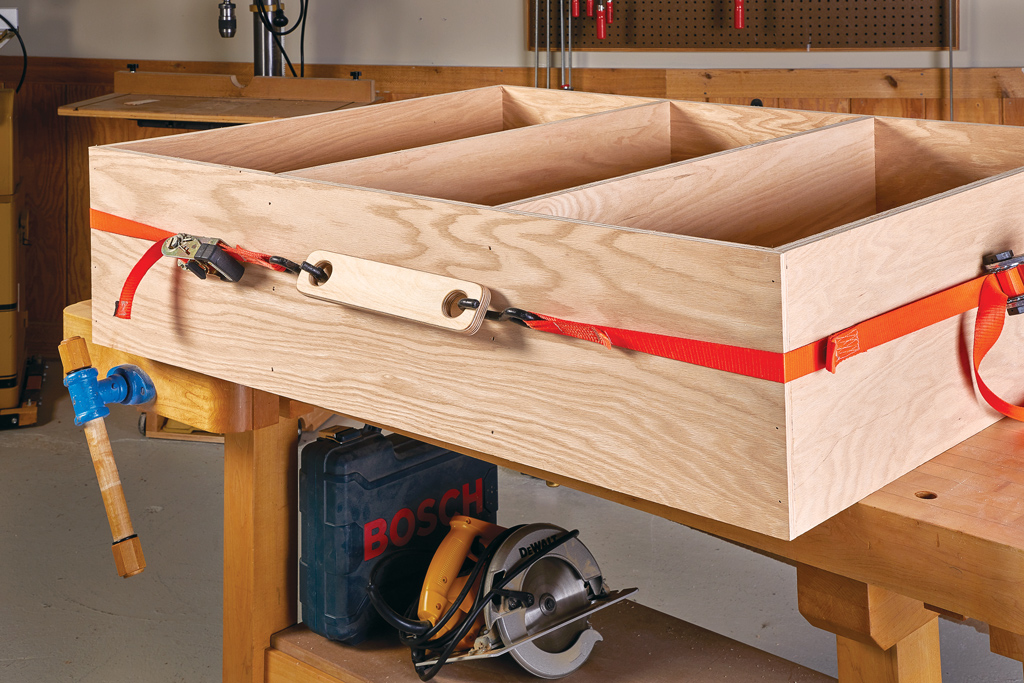Sooner or later, every woodworker confronts a tricky assembly and asks the question, "How in the world am I going to clamp this up?" Unfortunately, not all assemblies lend themselves to routine clamping techniques. When building this cherry sideboard, I faced a couple of these awkward clamping situations.
But there's always a way to work around the obstacle. With a little clamping ingenuity, you can avoid spending a lot of money on expensive specialty clamps or building time-consuming jigs. Here are a few clamping tricks that I use to help put the pressure on.
Bowed Caul

When clamping across the sides of a large case, it can be difficult to apply the pressure needed to flatten out the panel and snug up the joint. A clamp tightened at either edge usually won't do the trick. The side panel simply bows through the middle and you're left with a joint that won't close up.

The photo and drawing above show a reliable and easy solution to the problem. I employ a stiff caul with a slight, convex bow planed into it to put pressure through the center of the panel. A clamp tightened at either end of the caul forces it to flatten out, pushing the side snug to the mating piece. It works great.
Spring Stick
Sometimes a mechanical clamp isn't the only answer. I've found that this can be the case when gluing spacers or other parts into the interior of a case.

Here, the pressure needs to be applied from the inside out. There's no way to do this with a clamp. In this instance, I borrow a technique that's been around for ages. Flexible strips of wood make very serviceable "clamps". Cut about 1/2" longer than the span, these spring sticks can be flexed and then wedged from side to side to handle light to moderate duty tasks. It's an easy solution.
Clamp & Wedges
Using a clamp to put pressure directly on a piece is ideal, but clamps can also be employed indirectly to help with glueups. Take a look at the main photo below and you'll get the picture. A bar clamp tightened across the faces of a panel serves as the backup for a couple of opposing wedges. When you drive the wedges behind the bar, force is exerted on the edging. It's a handy way to apply edging to plywood panels or glue a face frame to the front of a wide case.

Clamp to Clamp
Regardless of what you're clamping, you need two solid surfaces to hold the jaws of the clamp and allow you to exert pressure. And during a complicated case glueup, it's all too common to find yourself lacking a second anchor point for the far end of the clamp.
What I do in this instance is create the absent clamping surface with another clamp. The photo below shows how this can work. First, I tighten a handscrew over the edge of the intersecting panel. Then a small pad placed behind the handscrew bridges the throat and supports one end of the clamp.

A Longer Reach
Having a few deep-throat clamps on hand can get you out of some tough spots. But there's always going to come a time when even deep-throat clamps won't work. This was the case when installing the lower bullnose molding on the cherry sideboard. The wide bottom rail of the face frame and the bottom panel prevented me from clamping directly over the molding.

The simple solution is to extend the reach of your clamps with a cleat and a spacer, as shown in the drawing above. When a clamp is tightened over the cleat, most of the force is transferred to the workpiece where it's needed.
Cleat & Wedges
Gluing the face frame to a case is always a bit of a test. But when the back of the case is already in place, the challenge increases. The back prevents you from installing clamps to pull the face frame tight against the case. This is the dilemma I faced when adding the face frames to the cherry sideboard.
Here, I got the job done by applying the clamping pressure using a notched cleat and pairs of wedges, as shown in the drawing below. First, I clamped the cleat across the front of the case in line with the facing. Then I inserted wedges behind the cleat to push the facing snugly against the edge of the plywood.

Profiled Caul
Clamping profiled parts usually calls for a "Plan B." Often there isn't a flat surface large enough to solidly support the head of the clamp. What you can do in this situation is square off the profiled part with a mirror-image caul. The caul provides the necessary clamping surface as well as prevents possible damage to the workpiece.

ShopTip: Tape It













